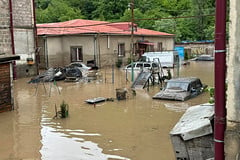
The current rate of increase in atmospheric carbon dioxide is 10 times faster than at any time in the last 50,000 years, researchers have found after conducting a detailed chemical analysis of ancient Antarctic ice.
The research, published in the journal Proceedings of the National Academy of Sciences, provides new insights into Earth's past periods of dramatic climate change and into the potential impacts of climate change today.
“The rate of CO2 change today really is unprecedented," says Kathleen Wendt, an assistant professor at Oregon State University's College of Earth, Ocean, and Atmospheric Sciences and the study's lead author “Our research identified the fastest rates of past natural CO2 rise ever observed, and the rate occurring today, largely driven by human emissions, is 10 times higher.”
Carbon dioxide, or CO2, is a greenhouse gas that occurs naturally in the atmosphere. When carbon dioxide enters the atmosphere, it contributes to climate warming through the greenhouse effect. In the past, levels fluctuated due to ice age cycles and other natural causes, but today they are increasing due to human-caused emissions.
Ice that has accumulated in Antarctica over hundreds of thousands of years contains ancient atmospheric gases trapped in air bubbles. Scientists use these ice samples, collected by core drilling up to 3.2 km deep, to analyze traces of chemicals and create a record of past climates.
















